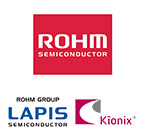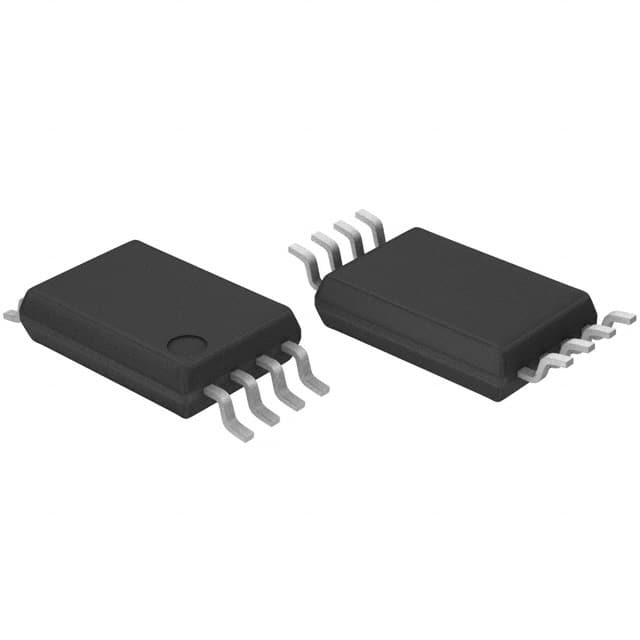BR24G256FV-3AGTE2
Product Overview
Category
The BR24G256FV-3AGTE2 belongs to the category of non-volatile memory devices.
Use
This product is primarily used for data storage in various electronic devices, such as microcontrollers, embedded systems, and consumer electronics.
Characteristics
- Non-volatile: The BR24G256FV-3AGTE2 retains stored data even when power is removed.
- High capacity: It offers a storage capacity of 256 kilobits (32 kilobytes).
- Low power consumption: The device operates at low power levels, making it suitable for battery-powered applications.
- Fast data transfer: It supports high-speed data transfer rates, ensuring efficient read and write operations.
- Robust design: The BR24G256FV-3AGTE2 is designed to withstand harsh environmental conditions, ensuring reliable performance.
Package and Quantity
The BR24G256FV-3AGTE2 is available in a compact SOP-8 package. Each package contains one unit of the device.
Specifications
- Memory capacity: 256 kilobits (32 kilobytes)
- Interface: I2C (Inter-Integrated Circuit)
- Operating voltage: 1.7V to 5.5V
- Data transfer rate: Up to 400 kHz
- Operating temperature range: -40°C to +85°C
- Write endurance: 1 million cycles
- Data retention: 100 years
Pin Configuration
The BR24G256FV-3AGTE2 features an SOP-8 package with the following pin configuration:
┌───┬───┬───┬───┐
│ 1 │ 2 │ 3 │ 4 │
├───┼───┼───┼───┤
│ 8 │ 7 │ 6 │ 5 │
└───┴───┴───┴───┘
- VCC: Power supply voltage
- SDA: Serial data input/output
- SCL: Serial clock input
- WP: Write protect (optional)
- NC: Not connected
- GND: Ground
- NC: Not connected
- HOLD: Hold input (optional)
Functional Features
- Random access: The BR24G256FV-3AGTE2 allows random access to stored data, enabling efficient retrieval and modification.
- Page write mode: It supports page write operations, allowing multiple bytes of data to be written in a single operation, enhancing write efficiency.
- Write protection: The device offers write protection functionality, preventing accidental modification or erasure of stored data.
- Software reset: A software reset command is available to restore the device to its default state.
Advantages and Disadvantages
Advantages
- High storage capacity
- Low power consumption
- Fast data transfer rate
- Robust design for reliable performance
- Write protection feature for data security
Disadvantages
- Limited compatibility with other memory interfaces
- Relatively higher cost compared to lower-capacity memory devices
Working Principles
The BR24G256FV-3AGTE2 utilizes I2C communication protocol to interface with the host device. It stores data in non-volatile memory cells, which retain information even when power is removed. The device can be accessed using read and write commands sent through the I2C bus. It operates at low power levels and offers high-speed data transfer rates for efficient data handling.
Detailed Application Field Plans
The BR24G256FV-3AGTE2 finds applications in various fields, including: 1. Automotive electronics: Used for storing vehicle configuration data, sensor calibration values, and firmware updates. 2. Industrial automation: Enables storage of critical parameters, program code, and system settings in programmable logic controllers (PLCs) and industrial control systems. 3. Consumer electronics: Utilized in smart TVs, set-top boxes, and audio/video equipment for storing user preferences, channel lists, and firmware updates. 4. Medical devices: Stores patient data, device configurations, and software updates in medical equipment like patient monitors and diagnostic devices.
Alternative Models
- BR24G128FV-3AGTE2: A lower-capacity variant with 128 kilobits (16 kilobytes) of memory.
- BR24G512FV-3AGTE2: A higher-capacity variant with 512 kilobits (64 kilobytes) of memory.
- BR24G256FJ-3AGTE2: An alternative model with a different package type (SSOP-8) but similar specifications.
In conclusion, the BR24G
قم بإدراج 10 أسئلة وإجابات شائعة تتعلق بتطبيق BR24G256FV-3AGTE2 في الحلول التقنية
Sure! Here are 10 common questions and answers related to the application of BR24G256FV-3AGTE2 in technical solutions:
Q: What is the BR24G256FV-3AGTE2? A: The BR24G256FV-3AGTE2 is a serial EEPROM (Electrically Erasable Programmable Read-Only Memory) with a capacity of 256 kilobits (32 kilobytes). It is commonly used for non-volatile data storage in various electronic devices.
Q: What are the key features of the BR24G256FV-3AGTE2? A: Some key features of the BR24G256FV-3AGTE2 include a wide operating voltage range, high-speed read/write operations, low power consumption, and a built-in write protection function.
Q: In which applications can the BR24G256FV-3AGTE2 be used? A: The BR24G256FV-3AGTE2 can be used in a wide range of applications such as automotive systems, industrial equipment, consumer electronics, medical devices, and more.
Q: How does the BR24G256FV-3AGTE2 connect to a microcontroller or other devices? A: The BR24G256FV-3AGTE2 uses a standard I2C (Inter-Integrated Circuit) interface for communication with microcontrollers or other devices. It requires two lines - SDA (Serial Data) and SCL (Serial Clock).
Q: Can the BR24G256FV-3AGTE2 operate at different voltages? A: Yes, the BR24G256FV-3AGTE2 has a wide operating voltage range from 1.7V to 5.5V, making it compatible with various power supply voltages.
Q: How fast is the read/write speed of the BR24G256FV-3AGTE2? A: The BR24G256FV-3AGTE2 supports high-speed read and write operations, with a maximum frequency of 1 MHz for the I2C interface.
Q: Can the data stored in the BR24G256FV-3AGTE2 be protected from accidental modification? A: Yes, the BR24G256FV-3AGTE2 has a built-in write protection function that allows you to protect specific memory areas or the entire chip from accidental modification.
Q: What is the endurance of the BR24G256FV-3AGTE2? A: The BR24G256FV-3AGTE2 has an endurance of at least 1 million write cycles, ensuring reliable and long-lasting data storage.
Q: Is the BR24G256FV-3AGTE2 resistant to environmental factors such as temperature and humidity? A: Yes, the BR24G256FV-3AGTE2 is designed to operate reliably over a wide temperature range (-40°C to +85°C) and can withstand high levels of humidity.
Q: Are there any development tools or software available for working with the BR24G256FV-3AGTE2? A: Yes, Renesas provides development tools and software libraries that facilitate the integration and programming of the BR24G256FV-3AGTE2 into various technical solutions.
Please note that these answers are general and may vary depending on the specific requirements and use cases of your technical solution.


